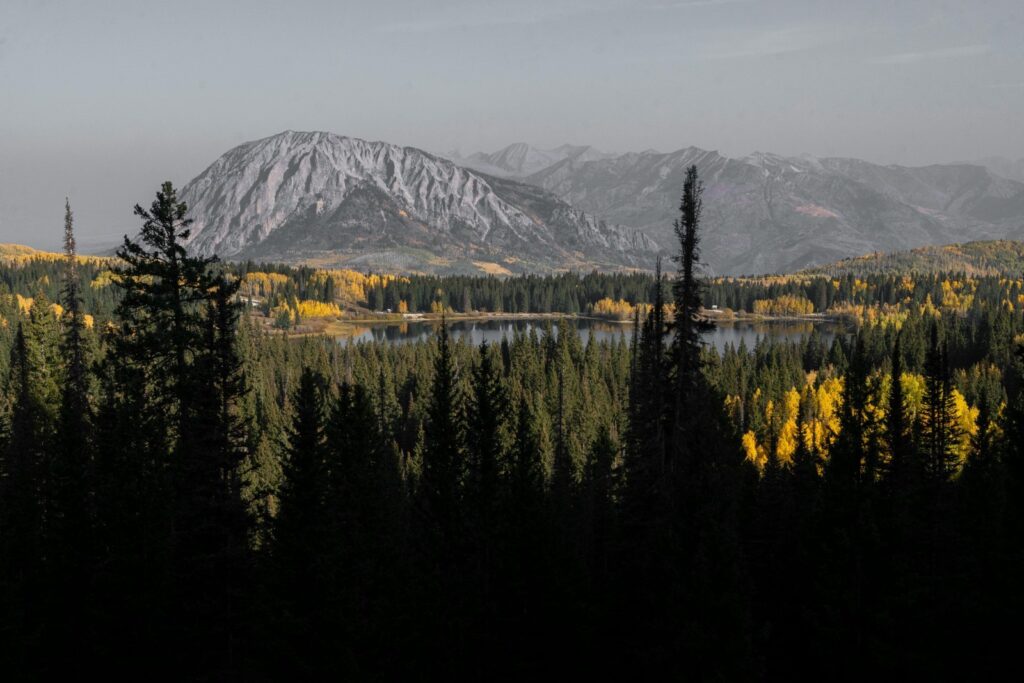Crested Butte, a mountain town located high in the Colorado Rockies, prides itself as a community infused with creativity, authenticity, and a deep sense of connection to the Town’s unique history and character. Yet the Town is at a crossroads: to preserve the qualities that make Crested Butte so beloved, it must reduce its car dependency and expand access to sustainable transportation options such as walking, biking, and public transit. Guided by its Community Compass – a framework document designed to safeguard the Town’s unique values– Crested Butte is exploring transformative solutions that promote low-carbon transportation and allow the Town to “remain a pedestrian and townie-first community by de-emphasizing cars” (Crested Butte Transit Mobility Plan).

In support of this goal, our Ucross research team is tasked with identifying potential enhancements to the Town’s transportation system, as well as financial mechanisms to make these proposals feasible. My fellow research assistant, Joshua Hernandez, wrote of the challenging prospect of parking reform in Crested Butte in his recent update [link to Josh’s blog post]. Parking reform and transit expansion work well in tandem: by reducing the amount of space dedicated to cars and improving the efficiency and accessibility of public transportation, Crested Butte can disincentivize the use of automobiles while also enhancing alternate mobility options, reducing greenhouse gas emissions, and promoting a more walkable and vibrant community that aligns with the Town’s heritage and identity.
The Town of Crested Butte is serviced by two transit providers. The Gunnison Valley Transportation Authority (GVRTA) operates along the Highway 135 corridor, providing access between Crested Butte and the ski resort in the north and the city of Gunnison in the south. Mountain Express offers free ground transportation from the town of Crested Butte to Mt. Crested Butte, home to a prominent ski resort. Both transit systems have increased their service over recent years, and indeed, many residents and visitors alike already choose public transit in place of cars for their day-to-day travel within and outside the Town. Yet challenges remain in the Town’s journey towards encouraging transit use in place of cars. Only 23 percent of Crested Butte residences are located within 500 feet of a Mountain Express bus stop, and while the regional GVRTA has experienced increased ridership over the past fifteen years, Mountain Express’ ridership has remained relatively stagnant (Transportation Plan Phase 1).
As research assistants, we’re exploring strategies to further enhance the efficiency, accessibility, and desirability of Crested Butte’s transit. Turning to case studies from other small towns in the Mountain West, we have explored solutions ranging from implementing new transit programs to support first- and last- mile service, to the replacement of less frequently used bus lines with demand-responsive routes, to increased seasonal stops to trailheads and popular recreation sites, among others. While these additions to Crested Butte’s transit system may aid in the transition away from a car-centric community, their implementation is far from simple. Mountain Express is one of the most cost-efficient public transit systems in the Mountain West, yet it still faces many of the financial limitations and competing priorities common to most local transit systems: the dedication of funds for present and future capital investments, difficulty in sustaining a full employee pool, and slow growth of ridership, to name a few. And while Crested Butte’s Transportation and Mobility Plan calls for transformative change, rather than incremental, the Town must also be sure its objectives dovetail with the plans of the broader County, the two transit providers, and other relevant stakeholders at the regional level. If improvements to Crested Butte’s transit system are successfully enacted, there is also the tricky matter of ensuring that the community’s behavior changes accordingly; this will require additional efforts to engage and educate the public on these new initiatives. Throughout the winter and spring, our research team looks forward to preparing actionable recommendations that align with the Town’s priorities and values, helping Crested Butte advance its vision of a sustainable, low-carbon future while preserving the qualities that make it such a well-loved locale for residents and tourists alike.
STUDENT RESEARCHER

